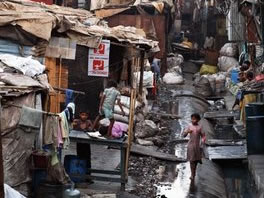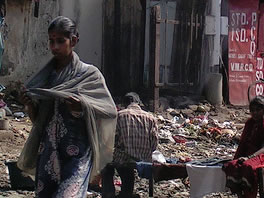
This nation is the seventh-largest country by geographical area, the second-most populous country with an estimated 1.2 billion people, and it is the most populous democracy in the world. Home to the Indus Valley Civilisation and a region of historic trade routes and vast empires, the Indian subcontinent was identified with its commercial and cultural wealth for much of its long history.
India is also the birthplace of several religions--Hinduism, Buddhism, Jainism, and Sikhism--and the home for more than a thousand years of Jewish, Zoroastrian, Muslim, and Christian communities. All these religions shaped the region's diverse culture. It needs to be noted that the vast majority of religious groups lived in peaceful coexistence for long periods of time; however, there were some organized communal attacks against minority religious groups.
Gradually annexed by the British East India Company from the early eighteenth century and colonised by the United Kingdom from the mid-nineteenth century, India became an independent nation in 1947 after a struggle for independence that was marked by widespread non-violent resistance. India had experienced a very long history of total independence from European, Asia, and other powers until, the British Inid Company began to annex the region piece by piece starting in the early eighteenth century. India finally became a part of the worldwide British Empire from the mid-nineteenth century and only achieved it's independence after a prolonged struggle. Mahatma Gandhi (1869 – 1948) was the pre-eminent political and spiritual leader of India during its independence movement.
India is a growing world power and a nation to reckon with, but it is still a country where people are suffering from poverty, hunger and malnutrition.
The last 50 years have seen a rapid increase in population due to medical advances and massive increase in agricultural productivity made by the green revolution. India's urban population increased 11-fold during during the twentieth century and is increasingly concentrated in large cities. By 2001 there were 35 million-plus population cities in India, with the largest cities, with a population of over 10 million each, being Mumbai, Delhi and Kolkata. However, as of 2001, more than 70% of India's population continues to reside in rural areas. English is used extensively in business and administration and has the status of a 'subsidiary official language;' it is also important in education, especially as a medium of higher education. In addition, every state and union territory has its own official languages, and the constitution also recognises in particular 21 "scheduled languages". Despite pressing problems such as significant overpopulation, environmental degradation, extensive poverty, and widespread corruption, rapid economic development is fueling the country's rise on the world stage.
 India's culture has managed to preserve established traditions while absorbing new customs, traditions, and ideas from invaders and immigrants and spreading its cultural influence to other parts of Asia, mainly South East and East Asia. Traditional Indian society is defined by relatively strict social hierarchy. The Indian caste system describes the social stratification and social restrictions in the Indian subcontinent, in which social classes are defined by thousands of endogamous hereditary groups, often termed as jātis or castes. The whole population of India is divided into seven classes, Under the Jati system, a person is born into a Jati with ascribed social roles. Marriages only take place only within that Jati. The Jati provided identity, security and status and has historically been open to change based on economic, social and political influences.
India's culture has managed to preserve established traditions while absorbing new customs, traditions, and ideas from invaders and immigrants and spreading its cultural influence to other parts of Asia, mainly South East and East Asia. Traditional Indian society is defined by relatively strict social hierarchy. The Indian caste system describes the social stratification and social restrictions in the Indian subcontinent, in which social classes are defined by thousands of endogamous hereditary groups, often termed as jātis or castes. The whole population of India is divided into seven classes, Under the Jati system, a person is born into a Jati with ascribed social roles. Marriages only take place only within that Jati. The Jati provided identity, security and status and has historically been open to change based on economic, social and political influences.
Traditional Indian family values are highly respected, and multi-generational patriarchal joint families have been the norm, although nuclear family are becoming common in urban areas. An overwhelming majority of Indians have their marriages arranged by their parents and other respected family members, with the consent of the bride and groom. Marriage is thought to be for life, and the divorce rate is extremely low.Child marriage is still a common practice, with half of women in India marrying before the legal age of 18.
The Constitution provides for freedom of religion, and the National Government generally respected this right in practice; however, some state and local governments limited this freedom by enacting or amending "anticonversion" legislation and by not efficiently or effectively prosecuting those who attacked religious minorities. Despite the National Government's rejection of "Hindutva," the ideology that espouses the inculcation of Hindu religious and cultural norms above other religious norms, "Hindutva" continued to influence the policies of some state and local governments and actions at the state and local levels. The National Government continues to implement an inclusive and secular platform that included respect for the right to religious freedom.
While the law generally provides remedy for violations of religious freedom, it is not enforced rigorously or effectively in many cases pertaining to religiously oriented violence. Legal protections exist to cover discrimination or persecution by private actors. The country's political system is federal and accords state governments exclusive jurisdiction over law enforcement and the maintenance of order, which limits the National Government's capacity to deal directly with state-level abuses, including abuses of religious freedom. The national law enforcement agency, the Central Bureau of Investigation (CBI), cannot investigate a crime committed in a state without the state government's permission. However, the National Government's law enforcement authorities, in some instances, have intervened to maintain order when state governments were reluctant or unwilling to do so.
The Government prohibits foreign missionaries of any religious group from entering the country without prior clearance and usually expels those who perform missionary work without the correct visa. Long-established foreign missionaries generally can renew their visas, but the Government has not admitted new resident foreign missionaries since the mid-1960s. There is no national law barring a citizen or foreigner from professing or propagating religious beliefs; however, the Foreigners Act prohibits speaking publicly against the religious beliefs of others. The act prohibits visitors on tourist visas from preaching without prior permission from the Ministry of Home Affairs. In 2007 Andhra Pradesh enacted the "Propagation of other religions in the places of worship or prayer (Prohibition) Law." Thus far, the state has identified only Hindu religious sites for this protection. Punishment for violations of the act can include imprisonment up to three years and fines up to $125 (Rs. 5,312). To date, there have been no prosecutions under the act. A fact-finding team from the NCM found that the prohibition is not in line with the Constitution's protections of freedom.

The Government permits private religious schools but does not permit religious instruction in government schools. The Government may prescribe merit-based admission for religious colleges that receive public funding. Others may use their own criteria, including religious affiliation. Many Hindu sects have established schools, although they do not receive aid from the state.
The major holy days of the predominant religious groups are considered national holidays, including Good Friday and Christmas (Christian); the two Eids (Islamic); Lord Buddha's Birthday (Buddhist); Guru Nanak's Birthday (Sikh); Dussehra, Diwali, and Holi (Hindu); and the Birthday of Lord Mahavir (Jain).
While there were no reports accusing the National Government of committing abuses of religious freedom, human rights activists criticized it for alleged indifference and inaction toward abuses state and local authorities and private citizens committed. Law enforcement and prosecution continued to be weak. This was exacerbated by a low police-to-population ratio, corruption, and an overburdened court system.
| Geography | |
| Location: | Southern Asia, bordering the Arabian Sea and the Bay of Bengal, between Burma and Pakistan |
| Climate: | Varies from tropical monsoon in south to temperate in north |
| Terrain: | Upland plain (Deccan Plateau) in south, flat to rolling plain along the Ganges, deserts in west, Himalayas in north |
| Elevation | Lowest point: Indian Ocean 0 m Highest point: Kanchenjunga 8,598 m |
| Natural Resources: | Coal (fourth-largest reserves in the world), iron ore, manganese, mica, bauxite, titanium ore, chromite, natural gas, diamonds, petroleum, limestone, arable land |
| Total Population: | 1,161,856,000 |
| People | |
| 0-14 years: 15-64 years: 65 years and over: |
31.1% 63.6% 5.3% |
| Urban Population: | 29% of total population (2008) |
| Largest City & Population: | Mumbai / 20,072,000 |
| Major Ethnic & Linguistic Groups: | Indo-Aryan 72%, Dravidian 25%, Mongoloid and other 3% |
| Language: | Hindi 41%, Bengali 8.1%, Telugu 7.2%, Marathi 7%, Tamil 5.9%, Urdu 5%, Gujarati 4.5%, Kannada 3.7%, Malayalam 3.2%, Oriya 3.2%, Punjabi 2.8%, Assamese 1.3%, Maithili 1.2%, other 5.9% |
| Literacy Rate: | 61% (Men 73.4%, Women 47.8%) |
| Religion & Christian Missions Progress | |
| Religions: | Hindu 80.7%, Muslim 13.3%, Christian 2.3%, Sikh 1.9%, Other 2.3%, unspecified 0.4% |
| Total People Groups/ Unreached | 2500/2,190 |
| Gospel Outreach Progress: | Unreached / Least-Reached Less than 2% Evangelicals and Less than 5% Christian Adherents |
| Unreached People - # Groups Unreached People - Population Unreached People - Population % |
2190 1,051,333,000 90.5% |
| Formative Church - # Groups Formative Church - Population Formative Church - Population % |
31 15,616,000 1.3% |
| Established Church -# Groups Established Church - Population Established Church - Population % |
279 94,907,000 8.2% |
| Persecution Ranking: | 26 (1=High to 50=Low) |
| Human Development Index | 0.612 (0=Low to 1=High) |
| Economy |
|
| Average Annual Income: | $820 USD (2009 est.) |
| Unemployment Rate: | 9.5% (2009 est.) |
| Population Below Poverty Line: | 25% (2007 est.) |
| Government | |
| Government Type: | Federal Republic |
| Independence: | 15 August 1947 (from the UK) |
| Legal System: | Based on English common law; judicial review of legislative acts; accepts compulsory ICJ jurisdiction with reservations; separate personal law codes apply to Muslims, Christians, and Hindus |